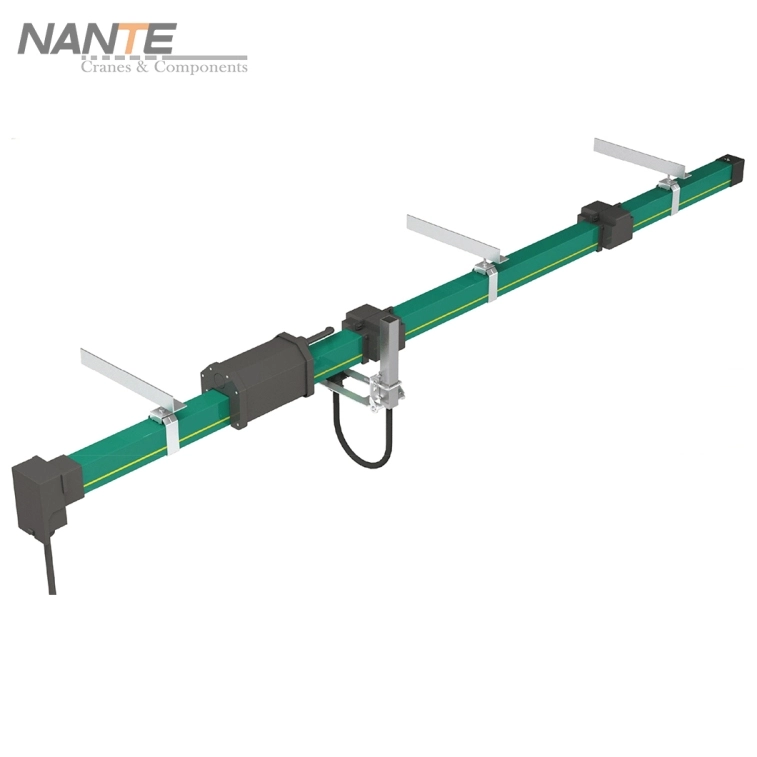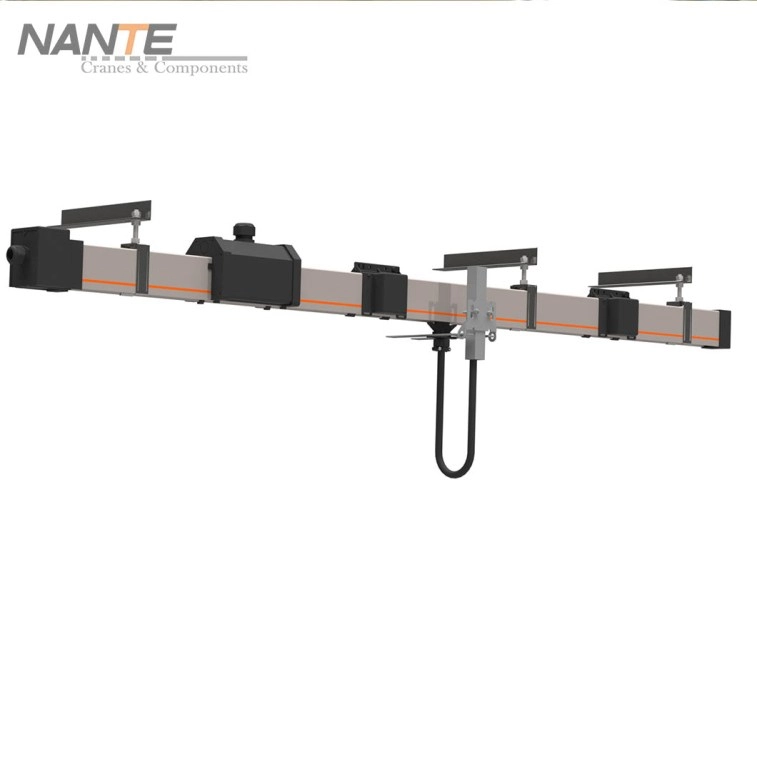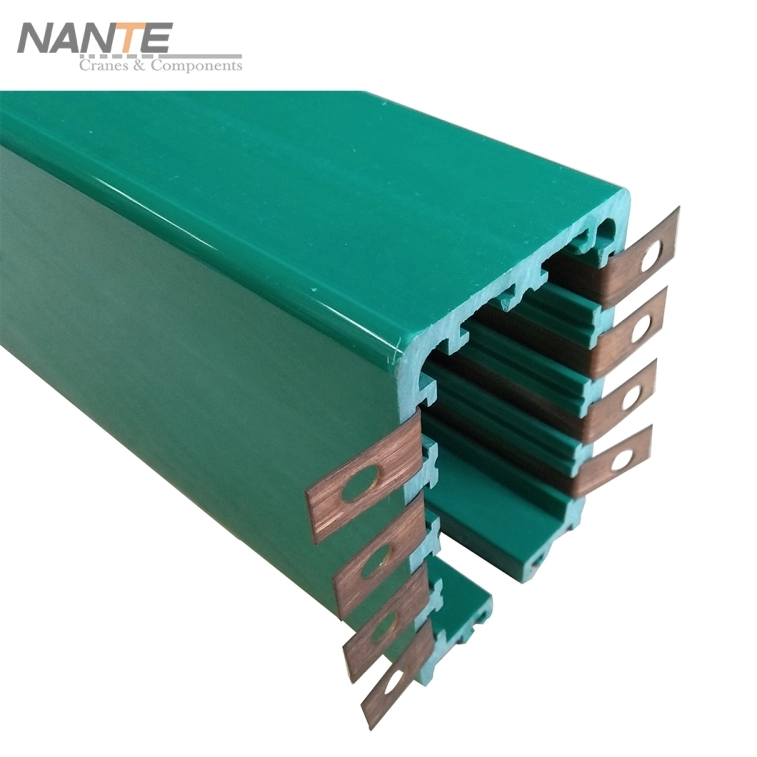Enclosed Conductor Rail Systems: Key Components, Benefits, and Maintenance
Date: 2025-04-10 Share:
Enclosed conductor rail systems are vital assets in industrial crane settings. They silently channel electricity to mobile gear like hoists, monorails, and cranes. Though often unnoticed, they hold a crucial role. They keep tasks flowing smoothly, safely, and efficiently.

This piece will clarify what enclosed conductor rail systems are. It will explain how they function. Plus, it will show why they’re so significant. You’ll also discover their main parts, how to maintain them, and answers to frequent queries. If you aim to enhance your factory or crane power setup, this overview is an excellent beginning.
What Is an Enclosed Conductor Rail System?
An enclosed conductor rail system is a power delivery method. It uses shielded copper rails to transmit electricity to moving machinery. These setups often support crane tasks where steady, dependable power is essential. Unlike exposed setups, enclosed rails have a unique plastic shield. This adds a robust layer of safeguarding.
Why Enclosed Conductor Rails Are Essential for Crane Operations
In crane activities, delivering power securely and consistently is critical. Cranes lift hefty weights. They require constant electricity for each hoist, shift, and pause. If power fails, the crane might halt mid-task. Worse, it could drop its load.
That’s why crane conductor rail systems are widespread across industries. An enclosed setup ensures electricity flows uninterrupted. Dust, dampness, or other harsh factors won’t interfere. These rails also reduce risks from bare wires or shaky links.
Overview of Nante Crane Conductor Rail Systems
Nante Crane provides three primary types of power conductor rail system options. These include the Unipole Conductor Rail, the High Tro Reel Conductor Rail (also called the seamless power rail), and the Enclosed Conductor Rail. Each uses pure copper conductors, sturdy PVC shielding, and corrosion-resistant fittings. They’re built to thrive in tough settings. This includes extreme heat or intense industrial use.
Nante systems can feature copper or aluminum. They come in various hues and dimensions too. Such adaptability makes them ideal for diverse cranes and workplaces.

Core Components of an Enclosed Conductor Rail System
Each enclosed conductor rail system has several key elements. They all collaborate to provide power safely and seamlessly.
1. Conductive Core: The Heart of Power Transmission
The conductive core is the central piece of the crane conductor rail. It’s typically crafted from T3-grade copper. This boasts a purity of 99.9999%. Such high purity cuts resistance. As a result, more energy reaches its target without waste.
Even with heavy crane demands, this copper core keeps power steady. Whether lifting, shifting, or halting, electricity remains reliable.

2. Insulated PVC Housing: Protection Against Environmental Hazards
The conductor rail sits within a special PVC casing. This cover does more than secure the copper. It shields it from weather, grime, chemicals, and other threats.
This PVC resists UV rays. So, it won’t degrade under sunlight. It also fights rust, which helps in salty or chemical-heavy zones. Even in dusty or soggy areas, the power conductor rail system stays secure and trusty.
3. Current Collector: Smooth Energy Transfer Mechanism
The current collector glides along the rail. It draws power from the rail to the moving equipment. It uses tough nylon holders and copper-graphite brushes.
This setup reduces wear. Thus, the system lasts longer. The brushes balance solid energy flow with lasting strength. That means less upkeep and better results over time.
Structural and Support Components
Beyond power-carrying parts, the system includes support pieces. These keep everything aligned and running well.
4. Joint Boxes and End Feed Units: Seamless Connectivity
These units link rail sections together. They’re made of durable plastic. Plus, they’re sealed against moisture and dust.
Their aim is clear. They make the power rail system feel unified. When joints are well-made, the current collector moves without jolts or delays.
5. Tow Arms and Hanger Clamps: Precision Movement Guidance
Tow arms and hanger clamps steer the current collector along the crane conductor rail. These are forged from galvanized steel. This wards off rust.
They ensure the collector stays positioned right during crane motion. So, power flows smoothly. This holds true even if the crane shifts direction or pace.
6. Mounting Brackets: Stability in Any Configuration
Mounting brackets prop up the entire setup. They adjust to suit the crane track’s height and layout.
By holding rails steady and firm, they prevent power hiccups. They also avoid mechanical snags.
Safety and Durability Enhancements
Enclosed conductor rail systems boast features to boost safety. They also extend the system’s lifespan.
7. End Caps: Sealing Against Contaminants
End caps sit at the rail ends. They block dust, dirt, and tiny debris from entering. They also prevent mishaps by keeping folks from live parts.
8. Hardware: Galvanized for Long-Term Reliability
Small bits like hangers, bolts, and brackets get galvanized coatings. This stops rust or decay. It works even in harsh surroundings.
A dependable power conductor rail system relies on every tiny piece being tough.
Maintenance Tips for Enclosed Conductor Rail Systems
Caring for your enclosed conductor rail system is the smartest way to ensure it runs well for years.
Regular Inspections: Ensuring Optimal Performance
Checking the system often is vital. Look for brush wear, PVC cracks, or loose joints.
Ensure the setup stays straight. Also, confirm the current collector glides easily. If something seems amiss, fix it fast. This prevents bigger issues later.
Cleaning and Lubrication: Extending Component Lifespan
Keep the system tidy with gentle cleaners. For moving bits, use graphite lubricants. These don’t draw dust.
A neat system performs better. It lasts longer too. Plus, it lowers the odds of power cuts or sudden breakdowns.
FAQs About Enclosed Conductor Rail Systems
Q: How long does an enclosed conductor rail typically last?
A: With proper care, a quality system like Nante’s can endure 10 to 15 years.
Q: Can enclosed conductor rails be used outdoors?
A: Yes. Their PVC casing and galvanized parts suit them for outdoor tasks.
Q: What makes copper-graphite brushes superior?
A: They offer great conductivity. They also wear less, needing fewer swaps.
Q: Are custom lengths available for specialized crane setups?
A: Yes, Nante provides rails in varied lengths and styles to match your crane.
Q: How do I troubleshoot intermittent power supply issues?
A: Start by checking collector alignment. Then, look at brush wear. Finally, examine joint links.
Ready to Optimize Your Crane’s Power System?
Picking the right conductor rail isn’t just about energy. It’s about accuracy, security, and durability too. Whether you’re refreshing an old setup or crafting a new crane layout, Nante’s team is ready to assist. Want a free consultation on finding the perfect conductor rail for your needs? Email us to explore our expertly designed solutions. Let’s fuel your efficiency without trade-offs!
 English
English






